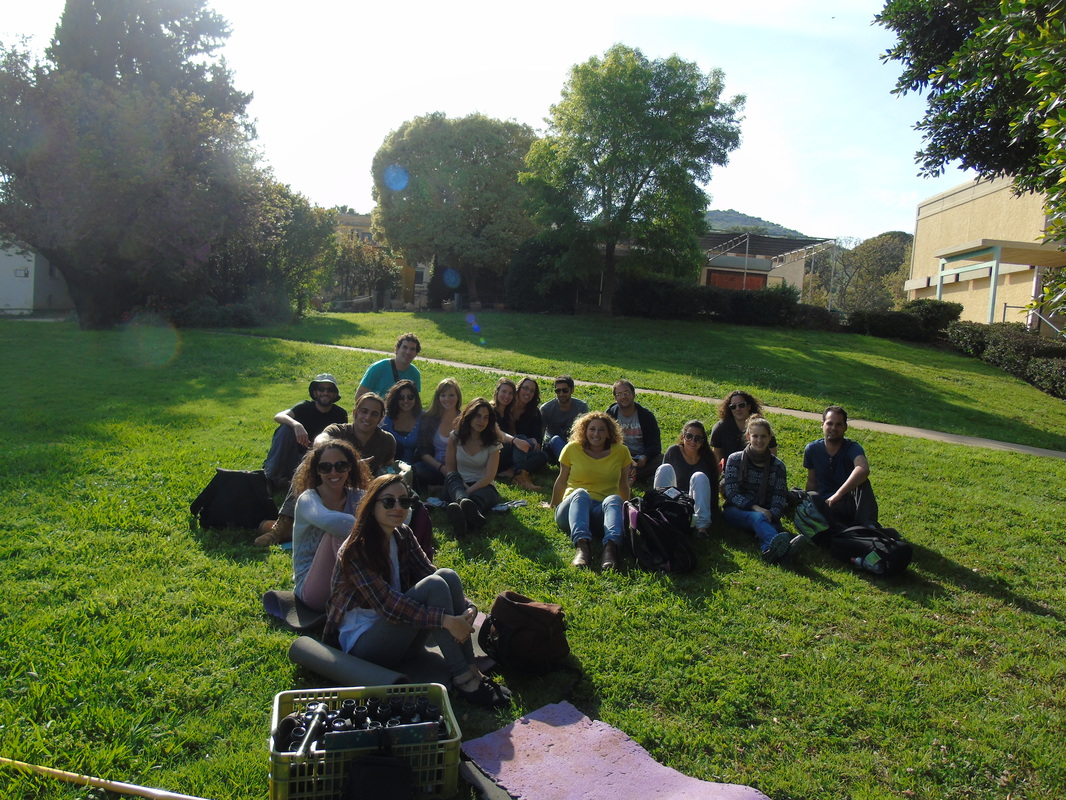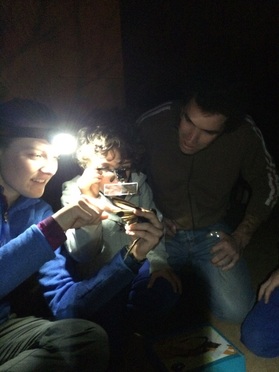Our fieldwork in Israel has brought some great opportunities to share our research with the public. I thought it would be worth writing a short blog post about them. While we were living at Amiad, Joey, and I were invited to teach a kindergarten class (in Israel, kindergarten actually means any were from 1-6 before the kids start school) about barn swallows. The kids were all about 4-5 years old and none of them spoke any English, which mean that we had to teach through a translator, as if it were not already hard enough to keep the attention of a group of about 20 4-5 year olds. The lesson was a bit chaotic, but I think the kids really liked it. We taught them about what barn swallows eat, how many eggs they lay, how long they live, and to top it off- Joey measured all of their right pointer fingers with the calipers and told them that all their fingers were longer then a barn swallows legs. A very important biological fact.
We showed the kids what the inside of a nest looks like using the mirror, and then took them to see one with eggs. It was very exciting because the eggs had hatched that morning and they could see the little pink chicks squirming around. There were lots of happy shrieks. We ended the lesson by telling them that in lots of other countries barn swallows are considered very lucky, that they are good birds that eat lots of bad bugs like sandflies and mosquitos that give people diseases, and that in many parts of the world they are declining. We ended this by encouraging all of the kids to love and protect barn swallows and to tell all their families and friends not to knock barn swallow nests down. Why not do a little conservation why we are at it? We sent all the kids off as newly christened barn swallow protectors.
Last week I had another great opportunity to share my research and I was not even in Israel. This semester Yoni is teaching a behavior ecology course. He decided to teach a lesson about sexual selection and parental care. He had his class generate hypotheses about whether attractive males would feed offspring more or less and they had to explain the biology behind each of these predictions. They then took a field trip to Amiad and spent several hours watching and collecting data on parental care behavior at several of our nests. This week the class will be comparing the feeding rate data they collected to the length of the male’s tail streamers. We hope to be able to use some of this data in our larger study and it sounds like the students really enjoyed it. Hopefully we will soon be able to answer the question- are sexy barn swallows better dads?
Last week I had another great opportunity to share my research and I was not even in Israel. This semester Yoni is teaching a behavior ecology course. He decided to teach a lesson about sexual selection and parental care. He had his class generate hypotheses about whether attractive males would feed offspring more or less and they had to explain the biology behind each of these predictions. They then took a field trip to Amiad and spent several hours watching and collecting data on parental care behavior at several of our nests. This week the class will be comparing the feeding rate data they collected to the length of the male’s tail streamers. We hope to be able to use some of this data in our larger study and it sounds like the students really enjoyed it. Hopefully we will soon be able to answer the question- are sexy barn swallows better dads?
We also had great fun hanging out with Yoni's kids, Alon and Jordan, and having them help us with fieldwork. Future scientists to be sure!




 RSS Feed
RSS Feed